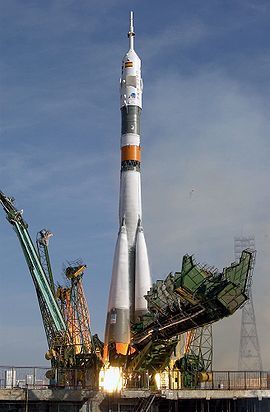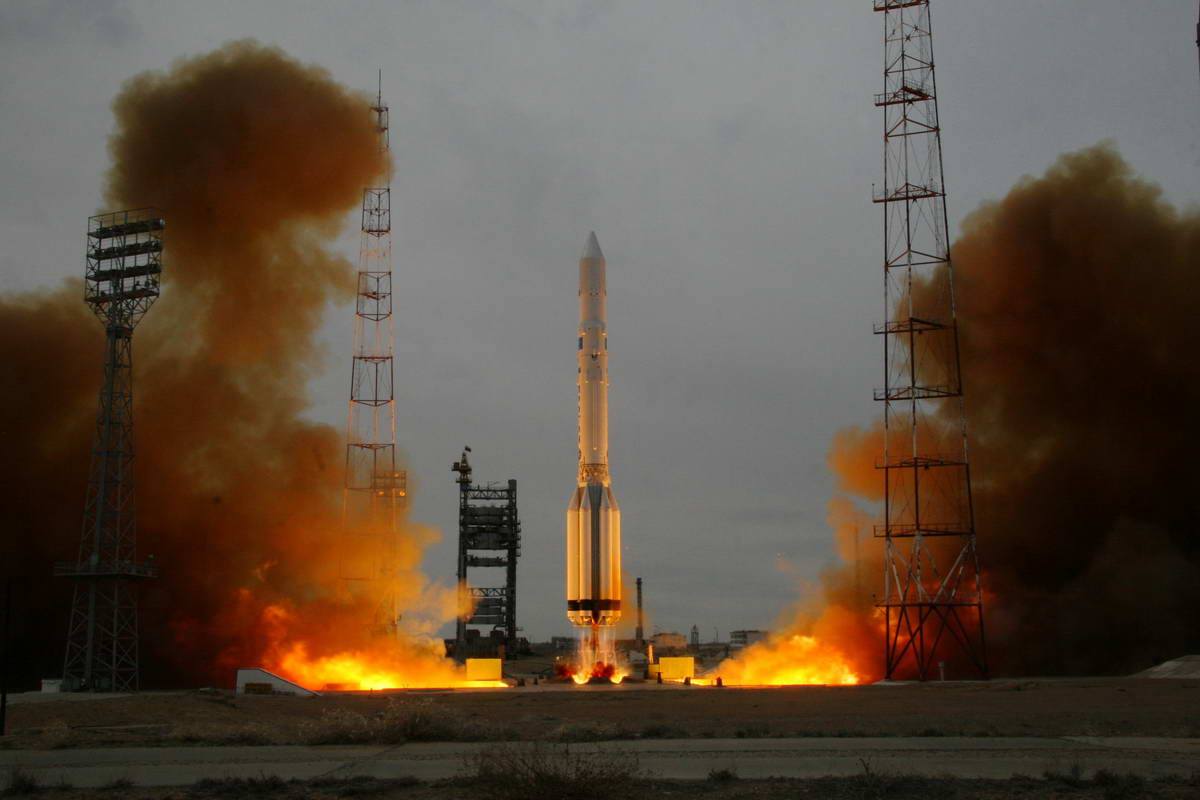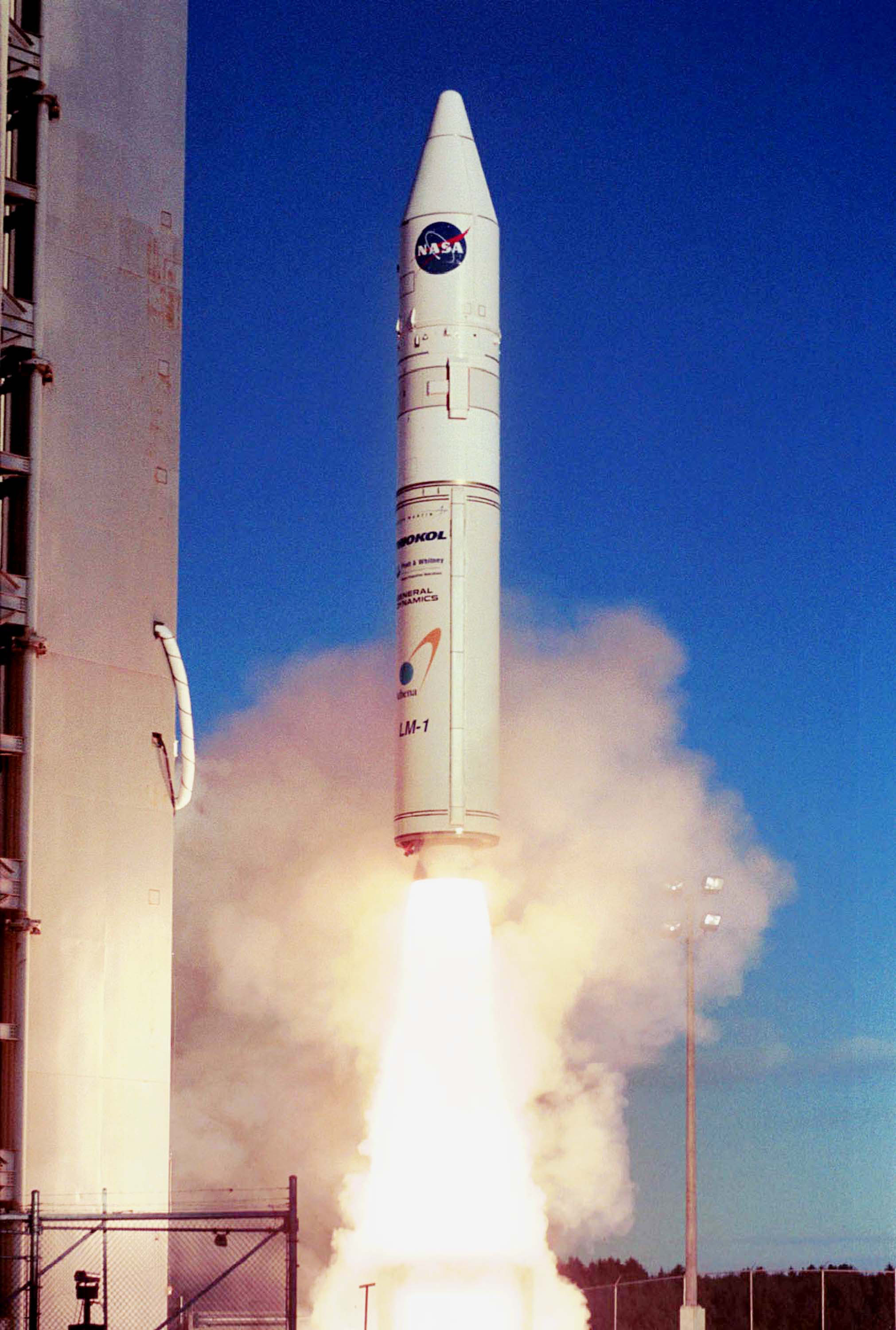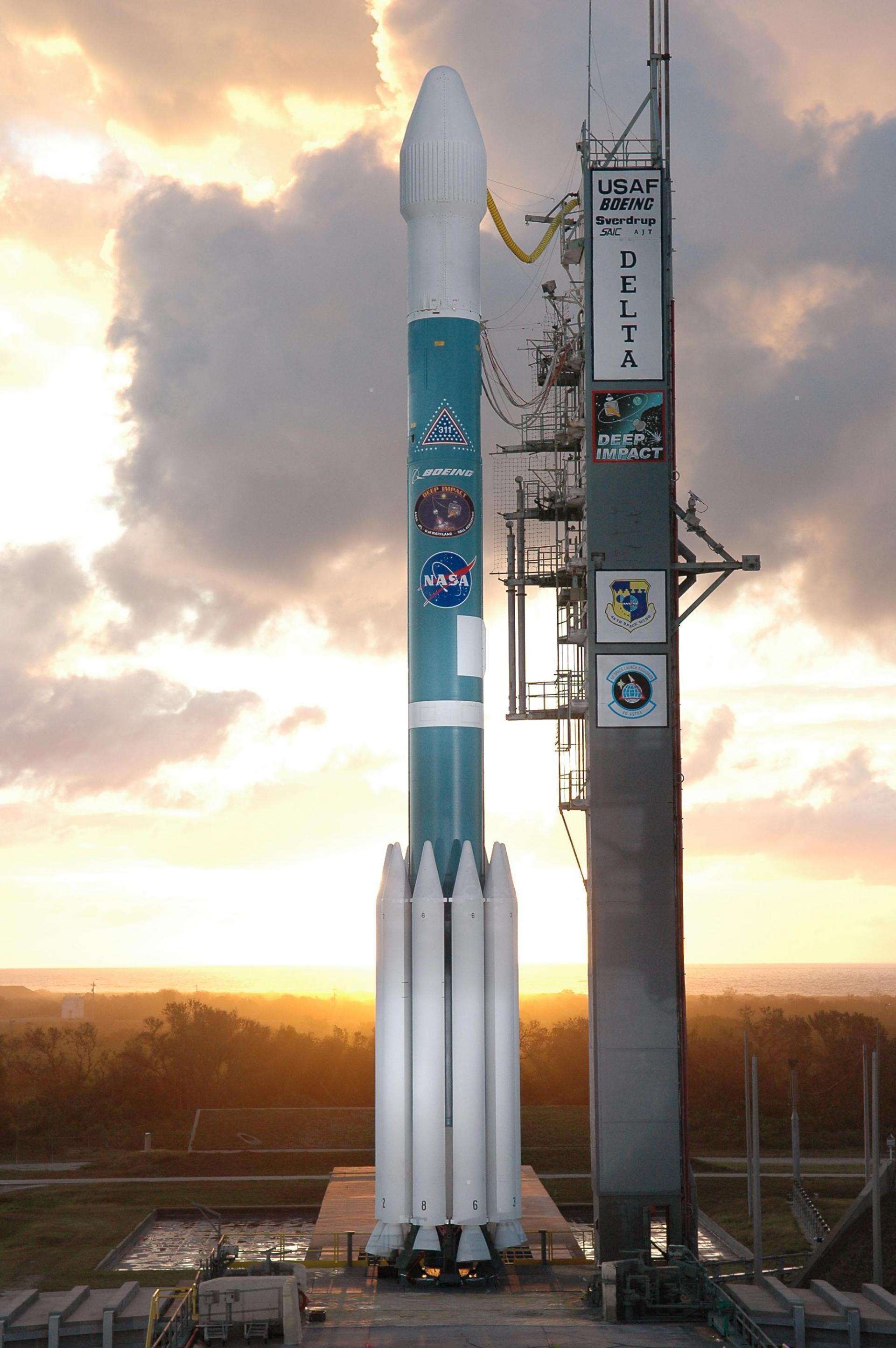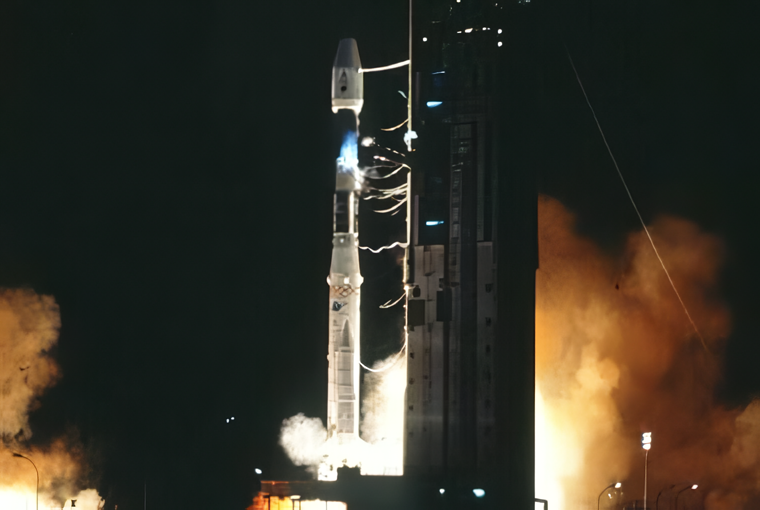Previous Spaceflight Launches
Filter by Agency, Locations or Vehicles
Show All LaunchesSoyuz-U2 | Soyuz TM-22
Soviet Space Program | RussiaBaikonur Cosmodrome, Republic of Kazakhstan
Sept. 3, 1995, 9 a.m.
Status: Launch Successful
Mission:
Soyuz TM-22 was the 23rd mission and the 20th long-duration expedition to Mir space station. It was also a part of the US/Russian Shuttle-Mir Program. The mission began on September 3, 1995, 09:00:23 UTC, launching Commander Yuri Gidzenko, Flight Engineer Sergei Avdeyev and Research Cosmonaut Thomas Reiter into orbit. They docked with Mir two days later. During their stay there, cosmonauts performed several EVAs and various scientific experiments. Station crew was visited by several Progress resupply spacecrafts, STS-74, and welcomed aboard Soyuz TM-23 with the next expedition crew. The mission concluded with a safe landing back on Earth on February 29, 1996, 10:42:08 UTC.
Low Earth OrbitTsiklon-3 | Okean-O1 8
Yuzhnoye Design Bureau | UkrainePlesetsk Cosmodrome, Russian Federation
Aug. 31, 1995, 6:49 a.m.
Proton | Potok 9
Khrunichev State Research and Production Space Center | RussiaBaikonur Cosmodrome, Republic of Kazakhstan
Aug. 30, 1995, 7:33 p.m.
Ariane 44P | N-STAR a
Aérospatiale | FranceGuiana Space Centre, French Guiana
Aug. 29, 1995, 6:41 a.m.
Status: Launch Successful
Mission:
Two Space Systems/Loral (SS/L) satellites with the highest capacity of any commercial payloads in space were delivered on orbit in 1995 and 1996 and are now providing a variety of fixed and mobile domestic communications services to customers throughout Japan. These satellites, N-STAR-a and -b, replace the service of the SS/L CS satellites, which have now exceeded their expected lifetimes, and will also provide significant new services, which range from providing alternate routes for telephony, to emergency communications, to marine and terrestrial mobile services, and ISDN.
Geostationary OrbitAtlas IIAS | JCSAT 3
Lockheed Martin | United States of AmericaCape Canaveral SFS, FL, USA
Aug. 29, 1995, 12:53 a.m.
Status: Launch Successful
Mission:
Foreseeing the growth of the communications business, Japan Satellite Systems, Inc., (JSAT) of Tokyo signed a contract in October 1993 for a Hughes HS-601 satellite from Hughes Space and Communications International, Inc. The satellite, JCSAT-3, was designed to relay voice, data, and television signals via Ku-band to eastern Asia, Australia, New Zealand, and India; and via C-band to eastern and southern Asia and Hawaii.
Geostationary OrbitAthena I | Gemstar DSS-1
Lockheed Martin | United States of AmericaVandenberg SFB, CA, USA
Aug. 15, 1995, 10:30 p.m.
Status: Launch Failure
Mission:
The CTA GEMStar 1 (VITASAT 1) satellite partially sponsored by Volunteers In Technical Assistance (VITA) of Arlington Virginia, was launched at 2230 UTC from Vandenberg AFB on the 15-Aug-95, but a second stage failure destroyed the first flight of the Lockheed LLV-1 launch vehicle (later dubbed Athena-1).
Low Earth OrbitMolniya-M | Molniya-3 59L
Russian Space Forces | RussiaPlesetsk Cosmodrome, Russian Federation
Aug. 9, 1995, 2:21 a.m.
Delta II | Mugunghwa 1
United Launch Alliance | United States of AmericaCape Canaveral SFS, FL, USA
Aug. 5, 1995, 11:10 a.m.
Status: Launch Failure
Mission:
Koreasat 1 and 2, also known as Mugunghwa 1 and 2, were South Korean communications satellite launched by Delta-7925 rockets from Cape Canaveral. They were based on the Lockheed AS-3000 bus and carried 15 Ku-band transponders to provide TV coverage for South Korea and other Asian countries.
Geostationary OrbitAriane 42L | PAS 4
Aérospatiale | FranceGuiana Space Centre, French Guiana
Aug. 3, 1995, 10:58 p.m.
Status: Launch Successful
Mission:
In November 1991, PanAmSat Corporation ordered three Hughes HS-601 model PAS (PanAmSat) satellites from Hughes Space and Communications Company. The satellites provide video services for program distribution and syndication; data services for business applications; and services for video, radio, data and telephone transmission. They were placed over the Pacific, Atlantic and Indian oceans, respectively. In August 1993, PanAmSat ordered a fourth satellite, to be used as a spare. The spare was pressed into service to replace the first PAS-3 spacecraft, which was lost during a launch vehicle failure.
Geostationary OrbitMolniya-M | Interbol-1
Russian Space Forces | RussiaPlesetsk Cosmodrome, Russian Federation
Aug. 2, 1995, 11:59 p.m.
Status: Launch Successful
Mission:
The Interball Project is a multi-national effort that consists of four spacecraft: two main spacecraft of the Prognoz series, made in Russia, each with a small subsatellite (Magion) made in Czechoslovakia. The main objective is to study the physical mechanisms responsible for the transmission of solar wind energy to the magnetosphere, its storage there, and subsequent dissipation in the tail and auroral regions of the magnetosphere, ionosphere, and atmosphere during magnetospheric substorms.
Elliptical Orbit